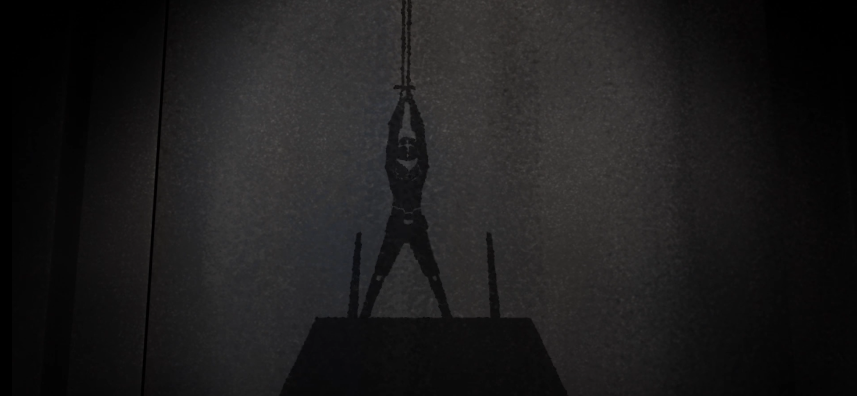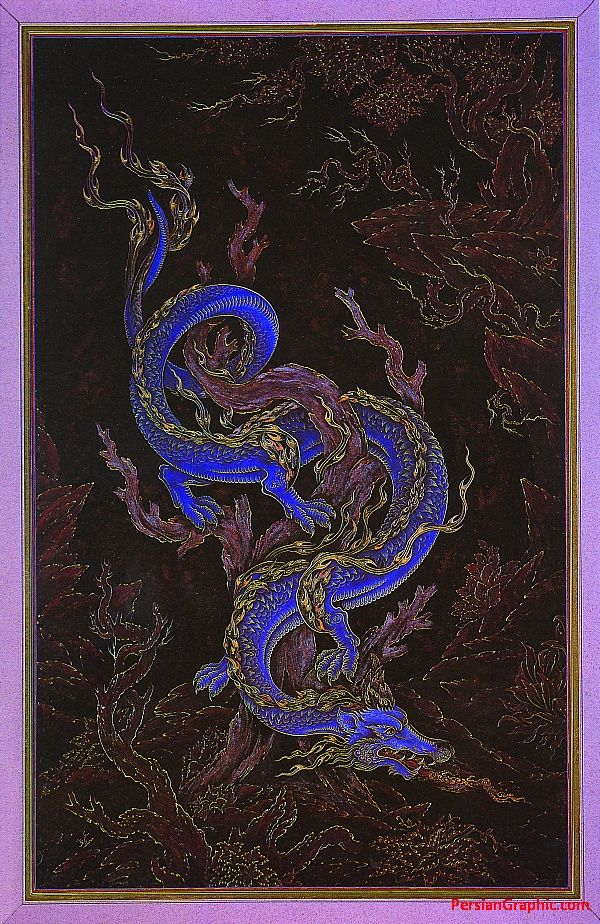"The Legend of Khaghatan the First"
"The Legend of Khaghatan the First" is the foundational myth of the Khaghate people of northern Iroa. The legend tells of the first Khaghatan, Tor, and his revelation of the Ogadinui, the ideological code of conduct that forms the societal framework of the Khaghate. The story acts both as an etiological device to describe the origin of the Khaghate people as well as a classic hero's journey emblematic of nomadic sagas.
Summary
This summary comes to us from the Solstician chronicler, Pendro Saligicci:
According to the Khaghate, the first of their kin was an orc named Tor. One of the first of his ancestry, Tor had been born when the Bloodied Lord Oheilion entombed the Dread Dragoness Valdra within the Material Plane. Witnessing the ferocity and power of their creation, the Heavenly Council banished Oheilion to the charred plains of Maurenchali. This left Tor and the rest of the newly begotten Blood of Oheilion without guidance, without purpose, and without hope. Orc and goblin and minotaur lashed out, fighting the other elder mortal races for a place in this world. They were all driven to the wild places of Holos and continued their struggle to survive.
One such wild place was the steppelands of northern Iroa where Tor and his clan relocated. Tor led his people for many years. He married a strong woman named Pau and had three daughters, Bole, Madral, and Vaal but one winter, he was set upon by his jealous brother Ram and his brother’s khevtuul1. Tor managed to escape the attack but not before witnessing his brother murder his daughter Bole. Distraught and wounded, Tor fled into the Eagle Mountains.
For many moons, Tor struggled to survive in the brutal highlands. At one point, the orc came upon a behir called Xiagru2. Overcome with hunger, Tor forgot the ancient prohibition on hunting the behir and attacked. The orc’s spear found purchase in the Xiagru hind, but as the beast fell, it turned and loosed an arrow at Tor3. The arrow buried itself in Tor’s right eye and in that moment, a vision came upon the orc.
Oheilion appeared to Tor. The Bloodied Lord showed Tor his clan in the Steppe. Ram lived as a decadent king and supped in a great tent surrounded by gold and foreign incense. Tor saw a Samarthian raiding party attack his clan. The centaurs cut down and scattered his people. Tor watched his second daughter, Madral, run through with a spear. Tor’s eye watered. His face became stone. Grief took him.
Tor asked the Bloodied Lord why he had allowed this injustice to happen. And the Bloodied Lord said:
“It was not I that set the sun in the sky. It was not I that made the winds howl. It was not I that sowed stone into the soil. It was not I that gave the deer speed. Do not blame me for what I did not do.”I have but one gift to give you: my Creed. Should you summon the wisdom to hear it, the insight to keep it, and the courage to live it; you may yet find the strength to remake this cruel world.”Tor awoke and plucked the arrow and his eye from his skull. He brought it to the body of Xiagru and burnt them in offering to Oheilion. In the flames, Tor forged a helm from the bones of the beasts. And under the light of the Dragon’s Wake4, Tor marked himself with anointed blood5 to the Ogadinui, to the Daikau'nare, and to the Way of the Khaghate. A week later, while out hunting, Tor came upon a band of travelers seeking refuge in the Eagle Mountains. When he revealed himself to them, they embraced him with tears and shouts of joy. For they were his people, the survivors of his clan. Tor asked for the whereabouts of his brother. They told him his brother and his wife had been taken by the Samarthians and remained in the valley below. Tor set off at once to rescue his kin. He made his way down the Eagle Mountains, facing prides of gryphons, a clan of one-eyed tricksters, and a grotto witch6 disguised as a temptress.7 Upon reaching the valley floor, Tor tracked the centaurs from the ruins of his brother’s decadent vheh’yaim8 to the Samarthian’s kurgan.9 10 When Tor arrived, he found the kurgan abandoned but for his wife, Pau, his only remaining daughter Vaal, and his brother, Ram. They told him that his daughter had spoken out against her mother’s treatment and had struck one of the chief’s sons. The Samarthian in turn had vowed to hold a feast in her honour and eat her alive11 that very evening. The tribe had gone out to kill a horse to supplement the meal. Tor freed his family but when Ram said they should run for the hills, Tor refused. He told his brother if they did not stand and fight, the Samarthians would forever pursue them, even after death. They would be remembered as hunted beasts and not as the warriors they were born to be. Ram called his brother mad and tried to remove his brother’s helmet. In a single stroke, Tor beheaded Ram for his insult and for his cowardice. With the Samarthians soon returning, Tor armed his wife and daughter and prepared the kurgan for their return. As the Samarthians arrived back at their camp, Tor climbed a sacred stone and called out to them. He spoke the Ogadinui and called on Oheilion to witness the Way of the Khaghate. When the Samartha attacked, Tor, Pau, and Vaal fought as one. They their fury broke upon the Samarthians, shattering spear and shield and arrow. Three mortals stood against more than six dozen hoofed heathens and each fell more than had been killed in a generation. When dawn’s rosy fingers clasped the sky, every stone and rock was painted crimson with the blood of the dead. The three mortals shone in the morning light like three flames on a red hill. Soon after, Tor and Pau and Vaal brought their kin down from the Eagle Mountains to resettle their homeland. Tor taught his people the Way of the Khaghate, the Daikau’nare, and the Ogadinui. In time, he abandoned his birthname for the name of his people and became Khaghatan. Today, Khaghatan the First, Pau the Defender, and Vaal the Armorer are remembered in song and rite as the first of the Khaghate and the guide stars of their people.
Footnotes
1 khevtuul — "night guard"; term for household guards that guard the alor during the night.2 Pronounced jhi-a-groo, with the jhi being the IPA sound ʒ.
3 This section of the story has multiple tellings. In some, Xiagru is an intelligent behir and actually uses a bow and arrow during their conflict. Some Khaghate art actually depicts this interpretation, with the behir loosing arrows wreathed in lightening at the orc hero. In others, as Xiagru falls, the spear lodged in Xiagru’s side gets broken and a large piece essentially ricochets back at Tor. The confusion for this appears to stem from the Khaghat'oa word, traak’yet, which can be translated as either “arrow,” like the munition or as “splinter” like a sharp, wooden shard.
4 Refers to the constellation of stars and nebulae that forms over the night sky in Holos.
5 Many Khaghate believe the marking Tor made was in fact the Mark of Tor, a sacred symbol found throughout Khaghate iconography. The marking of a warrior with a slain beast or monster's blood appears in multiple rituals in Khaghate culture, including the verd'goten and the appointment of a Khaghatan.
6 Khaghate phrase for an annis hag.
7 All three of these stories crop up in other legends of Tor but sadly are lost in this version of the legend. They serve as an additional road of trials for the hero before he can rescue his family.
8 vheh’yaim — a portable, round tent similar to a ger or yurt.
9 A kurgan is a holy site or burial ground in Khaghate and Samartha culture. They are typically raised earthen mounds surrounded by sacred stones.
10 While many nomadic steppe cultures, including the Khaghate use kurgans to bury their dead, the Samartha rarely use them. This is because the Samartha are a centaur culture and do not often build earthen structures. The inclusion of a kurgan is likely an apocryphal inclusion by Khaghate storytellers to convey the importance of the location to a Khaghate audience.
11 Many Khaghate stories involve Samartha eating mortal women and children. Though Samartha centaurs are cannibals, they rarely engage in ectocannibalism, preferring to consume their own kin in a ritualistic grieving ceremony.
Mithril Era stone carving of Khaghatan the First, Pau the Unshakable, and Vaal the Defender
Date of Setting
First Intermediate Period
Related Locations
Related People
Related Items







Comments